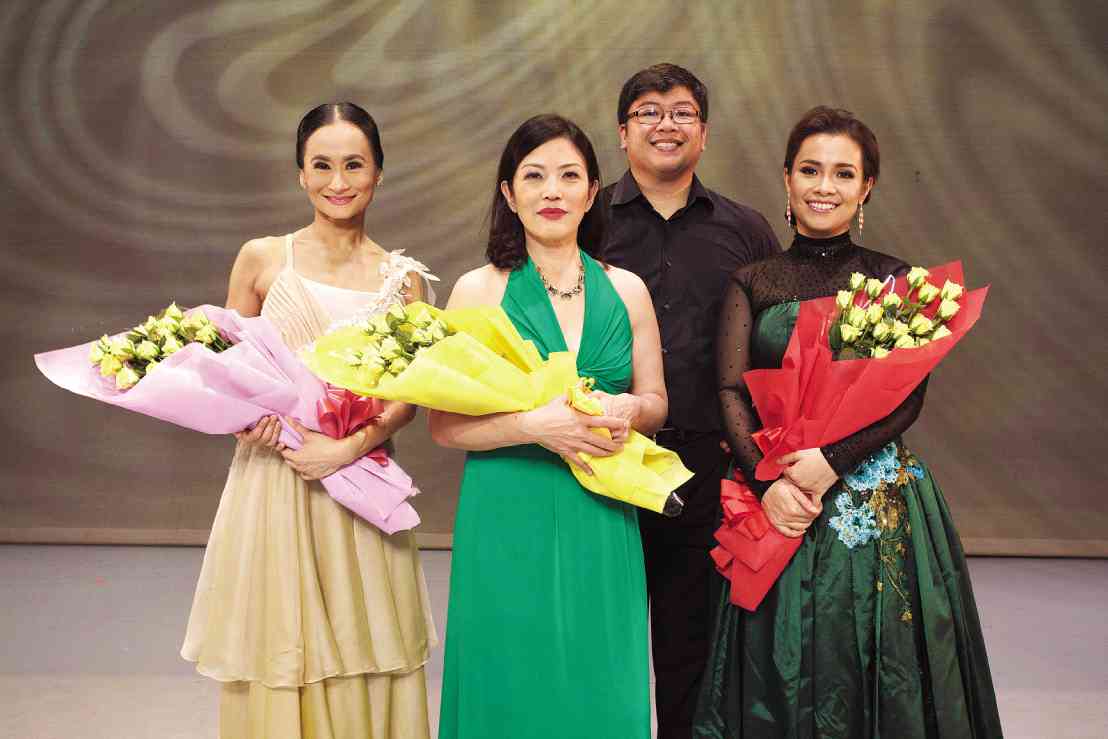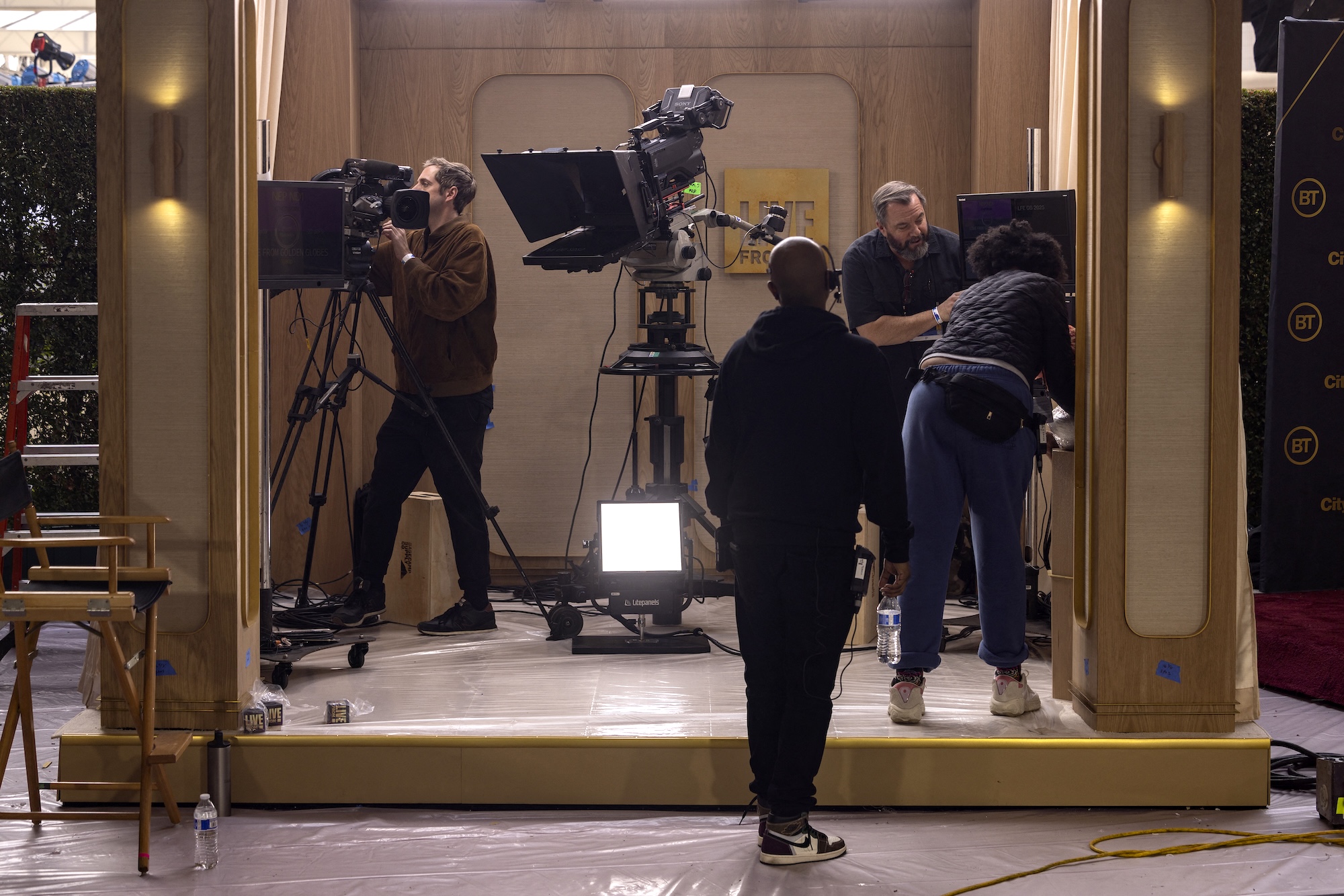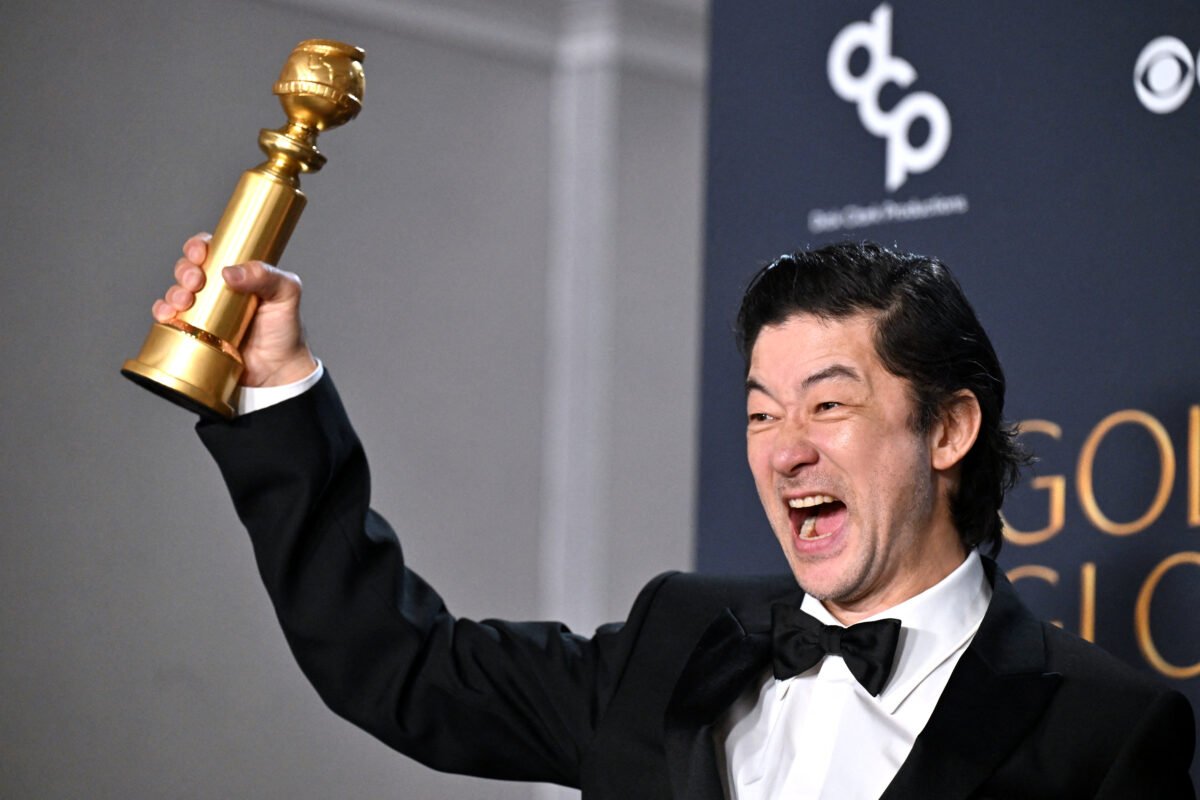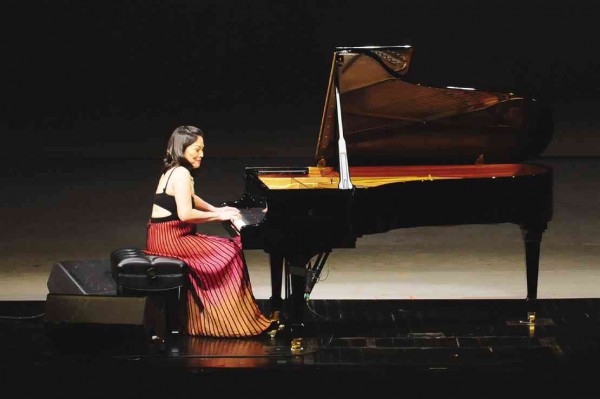
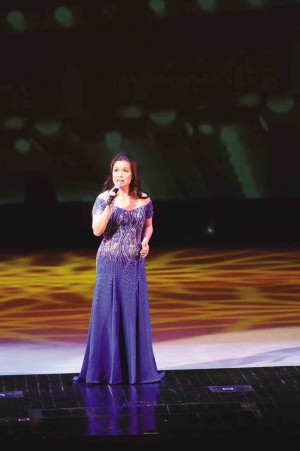
Diva Lea Salonga, prima ballerina Lisa Macuja-Elizalde and virtuoso pianist Cecile Licad once more awed music and dance lovers in their repeat performance of “The Legends and the Classics” at the Cultural Center of the Philippines.
The original 2012 staging earned the Aliw Award for Best Concert Collaboration. But as director Roxanne A. Lapus said in her notes, the audience were “not having enough.”
Macuja, the producer, said that hardly had the curtain fallen during the performance last year when people started asking when a reprise could be held.
Magical Salonga
I dubbed the performance the “Event of the Year” in my review of the musical highlights of 2012 (PDI, page C1, March 26, 2013). I wrote then that “‘Legends’ deserves a repeat!”
The encore was equally bewitching. There never was a dull moment as the audience savored the uninterrupted world-class performance that ran for 2½ hours.
Sharing their artistry on stage, the country’s living performing-arts legends did a perfect collaboration sans any prime consideration other than giving their best for their countrymen’s enjoyment.
The audience heartily applauded, punctuating their applause with crisp shouts of “Bravo!” as each icon took her turn to perform. In the end, the audience stood and gave the three an ovation.
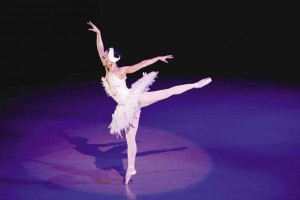
Salonga was magical. She held the audience on her palm. With a superb orchestra in the pit, the ABS-CBN Philharmonic Orchestra, conducted by her brother Gerard Salonga, the show’s musical director, she showed versatility, singing both OPM and Broadway songs with keen musicality.
Conductor Salonga forged close rapport not only with Lea but with Macuja and Licad as well.
In the opening song, “Nais Ko,” by Ryan Cayabyab, the three shared the stage, with appropriate choreography by Gerardo Francisco Jr.
Salonga brought the house down with her magical rendition of “Memory” from “Cats” as she let her voice soared to the higher register with utmost resiliency. Her voice stayed fresh in the succeeding songs, which she rendered with convincing alacrity.
Magnetic Macuja
Macuja was as magnetic as ever. Her presence was enough to capture the audience’s attention. The precise leaps, graphic sculptured poses, and the expressiveness that marked her dancing never failed to allure.
She was a warm and appealing Juliet in the balcony scene of “Romeo and Juliet,” choreographed by Augustus F. Damian III and set to the music of Sergei Prokofiev. Romeo was the articulate danseur Rudy de Dios.
Macuja portrayed the “Dying Swan” vividly. The music (Camille Saint-Säens, “Le Carnival des Animaux”) was caressingly intoned by the collaborative efforts of cellist Francisco Llorin and pianist Licad.
Macuja’s expressiveness undoubtedly rested on solid technique. Without such technical prowess, it would have been impossible to do a vivid portrayal of the swan on the verge of death: nimble steps (needless to say, on pointes); unceasing flapping of the hands; bodily quirks, capped by the resting of the head over the right arm. It was such a poignant portraiture!
She displayed virtuosity in “Paquita,” flawlessly executing 32 breathtaking pirouettes. The audience marveled at her precise turns, and gave her a warm applause midway, then a thunderous ovation at the completion of the turns. “Paquita” was restaged by Osias Barroso and Eileen Lopez.
The Ballet Manila corps de ballet lent Macuja its support.
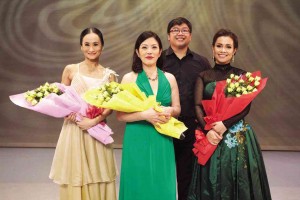
Macuja will hang her pointes by the end of the year. Her farewell performances—“Swan Song” will feature “La Bayadere” and “The Nutcracker” in November and December, respectively—are eagerly awaited.
By then she would have danced for over 30 years.
Rhapsodic Licad
Licad dazzled anew her countrymen. Only a pianist of solid virtuosity could give justice to Sergei Rachmaninov’s Rhapsody on a Theme by Paganini, Op. 43, admittedly a brief but demanding work. Obviously the piece seemed unfamiliar to most of the audience that applauded in the middle of Licad’s sterling rendition.
When Licad played the familiar 18th variation, which was made popular as the theme song of the movie “Somewhere in Time,” the audience was in rapt attention.
Licad breathed life into Rachmaninov’s opus. She made it sound fresh and let her tones sing exquisitely. She played on a Steinway piano provided by the Steinway Gallery of Singapore, Licad being a Steinway artist herself.
In the end, the audience rose to its feet and let out hearty shouts of “Bravo!”
In the Michel Legrand medley, the three once more shared the stage. The performance was enlivened by the choreography of Barroso Jr.
The entire cast shared the stage in the last number as Salonga sang “Sana’y Wala Nang Wakas,” with Macuja dancing to the original choreography of Tony Fabella (with additional choreography by Francisco and Barroso), and Licad on the piano.
Gerard Salonga waved his magic wand which cued the inspired musicians and everyone else onstage to make the ending truly memorable.
The production team deserved acknowledgment. Its pooled expertise ensured a majestic, grand production that will be remembered.
Lapus’ superb direction ensured an uninterrupted flow of sequences. The unfolding was so engrossing one hardly noticed the performance was of epic proportion, lasting over two hours.
This could not have been possible without the script intelligently written by Angela Blardony Ureta. The texts and visuals on the screen added luster to the production.
The lighting design by Jimmy Villanueva heightened the performance.
We congratulate the entire production for successfully staging the reprise of “The Legends and the Classics.”

